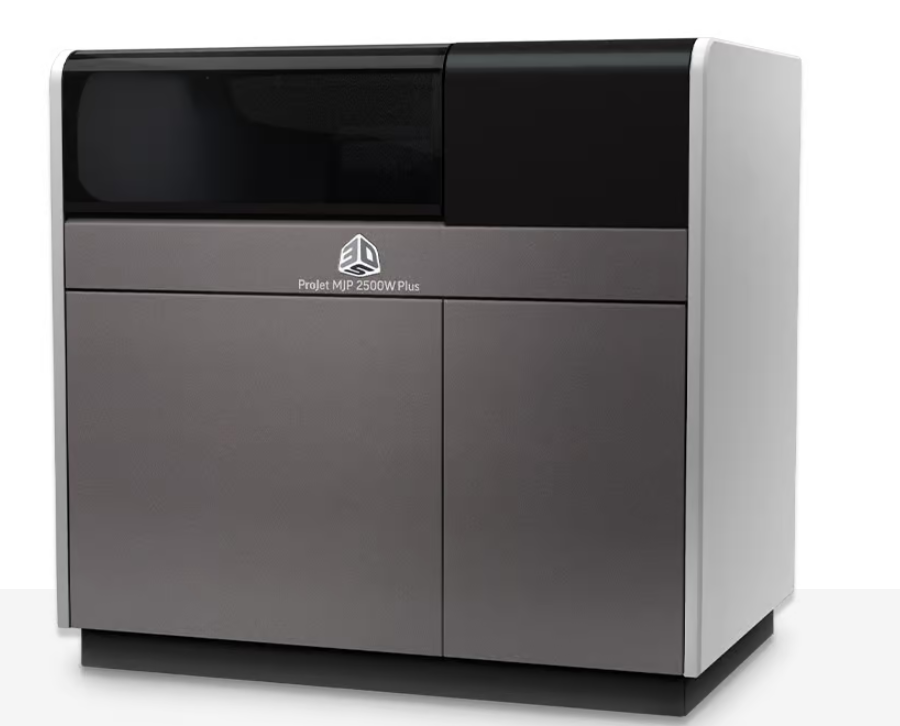US 3D printer manufacturer 3D Systems has announced the availability of the ProJet MJP 2500W Plus.
This novel solution is specially designed to create intricate, high-quality, pure wax 3D printed jewelry patterns with unprecedented speed and accuracy to be utilized in the lost wax casting process. The ProJet MJP 2500W Plus was designed specifically to fulfill the “unique requirements” of the jewelry industry, and it can generate high-resolution 100% wax casting patterns in hours.
Furthermore, the new high-resolution printing mode allows for “best-in-class” smooth pure wax casting patterns that demand less finishing, reducing precious metal wastage. This allows for the rapid and cost-effective iteration, creation, iteration, and manufacturing of all jewelry styles, along with those with the most complicated geometries.
“Producing jewelry requires the ability to bring complex, creative designs to life. The global jewelry additive manufacturing market is estimated at over $2 billion and is growing quickly due to the increased productivity, quality, flexibility, and design freedom enabled by this technology. Today, we’re excited to announce the ProJet MJP 2500W Plus, with increased resolution and productivity that is unmatched in the industry,” said Scott Anderson, Vice President, and Segment Leader, of 3D Systems.

ProJet MJP 2500W Plus streamlines the 3D printing of jewelry
The need for manual polishing can impose a major stress on resources, both in terms of skills and materials, and can have a negative financial impact. To address this issue, the ProJet MJP 2500W Plus 3D printer features a new ZHD print mode that improves vertical resolution by up to 2x without increasing wax material consumption. The consequent high-quality surface finish diminishes the requirement for manual polishing of final components, reducing gold loss and potentially improving profitability. Furthermore, with less polishing required, customers can create increasingly complicated designs for which polishing is impractical.
Meeting demand while maintaining high-quality standards necessitates rapid design iteration and customization, as well as the capability to produce large production batches. The ProJet MJP 2500W Plus is intended to assist clients to boost throughput by up to 25% over existing solutions. Consumers can benefit from quicker time to parts-in-hand and more versatility in planning builds with higher printer efficiency. Customers can consistently and rapidly develop micro-detail, accuracy, 100% wax sacrificial casting patterns for high-capacity jewelry manufacturing when employed as part of 3D Systems’ extensive MultiJet Printing solution for jewelry casting, which includes the ProJet MJP 2500W Plus, VisiJet wax materials, and 3D Sprint software, claims the company.
The ProJet MJP 2500W Plus 3D printer prints true-to-CAD and fine feature definition jewelry patterns with precise, razor-sharp corners and what the company describes as “highly crisp details” in VisiJet 100% wax materials. VisiJet wax melts like conventional casting waxes, but it contains no ash, resulting in defect-free castings. 3D Systems claims that it is tough to handle and cast fine features, and the high contrast colors enable simple fine-detail visualization. Furthermore, the enhanced 3D Sprint software functionalities of 3D Systems enable users to simplify their file-to-pattern workflow.
“This innovation allows our customers to deliver exceptional design styles, while reducing pattern production time and operational costs, meeting the demands of a mass-customization environment. Coupled with the reliable and repeatable direct casting of our 100% wax solution, users will be able to achieve cost-effective, high-quality casting patterns with quick turnaround and high throughput,” added Anderson.

Technical specifications and pricing
XHD Printing Mode –
Resolution: 1200 x 1200 x 1600 DPI
Layer thickness: 16 µm
Single Lane Build
Productivity: 147 cm3/hr (9 in3/hr)
Time for 1 in/2.54cm height: 4 hr
Two Lane Build
Productivity: 141 cm3/hr (8.6 in3/hr)
Time for 1 in/2.54cm height: 8 hr
Three Lane Build
Productivity: 134 cm3/hr (8.2 in3/hr)
Time for 1 in/2.54cm height: 12 hr
ZHD Printing Mode –
Resolution: 1200 x 1200 x 3200 DPI
Layer thickness: 8 µm
Single Lane Build
Productivity: 75 cm3/hr (4.6 in3/hr)
Time for 1 in/2.54cm height: 8 hr
Two Lane Build
Productivity: 72 cm3/hr (4.4 in3/hr)
Time for 1 in/2.54cm height: 16 hr
Three Lane Build
Productivity: 69 cm3/hr (4.2 in3/hr)
Time for 1 in/2.54cm height: 24 hr
What does the future of 3D printing for the next ten years hold?
What engineering challenges will need to be tackled in the additive manufacturing sector in the coming decade?
To stay up to date with the latest 3D printing news, don’t forget to subscribe to the 3D Printing Industry newsletter or follow us on Twitter, or like our page on Facebook.
While you’re here, why not subscribe to our Youtube channel? Featuring discussion, debriefs, video shorts, and webinar replays.
Are you looking for a job in the additive manufacturing industry? Visit 3D Printing Jobs for a selection of roles in the industry.



